Please note that the copies of these tutorials have not been updated since 2020 and Google Forms has many new features that have come out since then.
In September, I gave a talk at Oregon State University’s Instruction Librarian Get-Together about the interactive tutorials I built at PCC last year that have been integral to our remote instructional strategy. I thought I’d share my slides and notes here in case others are inspired by what I did and to share the amazing assessment data I recently received about the impact of these tutorials that I included in this blog post. You can click on any of the slides to see them larger and you can also view the original slides here (or below). At the end of the post are a few tutorials that you can access or make copies of.
I’ve been working at PCC for over six years now, but I’ve been doing online instructional design work for 15 years and I will freely admit that it’s my favorite thing to do. I started working at a very small rural academic library where I had to find creative and usually free solutions to instructional problems. And I love that sort of creative work. It’s what keeps me going.
I’ve actually been using survey software as a teaching tool since I worked at Portland State University. There, my colleague Amy Hofer and I used Qualtrics to create really polished and beautiful interactive tutorials for students in our University Studies program.
I also used Qualtrics at PSU and PCC to create pre-assignments for students to complete prior to an instruction session that both taught students skills and gave me formative assessment data that informed my teaching. So for example, students would watch a video on how to search for sources via EBSCO and then would try searching for articles on their own topic.
A year and a half ago, the amazing Anne-Marie Dietering led my colleagues in a day of goal-setting retreat for our instruction program. In the end, we ended up selecting this goal, identify new ways information literacy instruction can reach courses other than direct instruction, which was broad enough to encompass a lot of activities people valued. For me, it allowed me to get back to my true love, online instructional design, which was awesome, because I was kind of in a place of burnout going into last Fall.
At PCC, we already had a lot of online instructional content to support our students. We even built a toolkit for faculty with information literacy learning materials they could incorporate into their classes without working with a librarian.
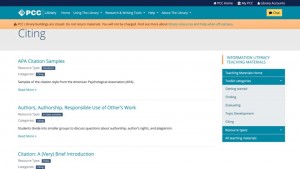
The toolkit contains lots of handouts, videos, in-class or online activities and more. But it was a lot of pieces and they really required faculty to do the work to incorporate them into their classes.
What I wanted to build was something that took advantage of our existing content, but tied it up with a bow for faculty. So they really could just take whatever it is, assign students to complete it, and know students are learning AND practicing what they learned. I really wanted it to mimic the sort of experience they might get from a library instruction session. And that’s when I came back to the sort interactive tutorials I built at PSU.
So I started to sketch out what the requirements of the project were. Even though we have Qualtrics at PCC, I wasn’t 100% sure Qualtrics would be a good fit for this. It definitely did meet those first four criteria given that we already have it, it provides the ability to embed video, for students to get a copy of the work they did, and most features of the software are ADA accessible. But I wanted both my colleagues In the library and disciplinary faculty members to be able to easily see the responses of their students and to make copies of the tutorial to personalize for the particular course. And while PCC does have Qualtrics, the majority of faculty have never used it on the back-end and many do not have accounts. So that’s when Google Forms seemed like the obvious choice and I had to give up on my fantasy of having pretty tutorials.
I started by creating a proof of concept based on an evaluating sources activity I often use in face-to-face reading and writing classes. You can view a copy of it here and can copy it if you want to use it in your own teaching.
In this case, students would watch a video we have on techniques for evaluating sources. Then I demonstrate the use of those techniques, which predate Caulfield’s four moves, but are not too dissimilar. So they can see how I would go about evaluating this article from the Atlantic on the subject of DACA.
The students then will evaluate two sources on their own and there are specific questions to guide them.
During Fall term, I showed my proof of concept to my colleagues in the library as well as at faculty department meetings in some of my liaison areas. And there was a good amount of enthusiasm from disciplinary faculty – enough that I felt encouraged to continue.
One anthropology instructor who I’ve worked closely with over the years asked if I could create a tutorial on finding sources to support research in her online Biological Anthropology classes – classes I was going to be embedded in over winter term. And I thought this was a perfect opportunity to really pilot the use of the Google Form tutorial concept and see how students do.
So I made an interactive tutorial where students go through and learn a thing, then practice a thing, learn another thing, then practice that thing. And fortunately, they seemed to complete the tutorial without difficulty and from what I heard from the instructor, they did a really good job of citing quality sources in their research paper in the course. Later in the presentation, you’ll see that I received clear data demonstrating the impact of this tutorial from the Anthropology department’s annual assessment project.

So my vision for having faculty make copies of tutorials to use themselves had one major drawback. Let’s imagine they were really successful and we let a thousand flowers bloom. Well, the problem with that is that you now have a thousand versions of your tutorials lying around and what do you do when a video is updated or a link changes or some other update is needed? I needed a way to track who is using the tutorials so that I could contact them when updates were made.
So here’s how I structured it. I created a Qualtrics form that is a gateway to accessing the tutorials. Faculty need to put in their name, email, and subject area. They then can view tutorials and check boxes for the ones they are interested in using.
Once they submit, they are taking to a page where they can actually copy the tutorials they want. So now, I have the contact information for the folks who are using the tutorials.
This is not just useful for updates, but possibly for future information literacy assessment we might want to do.
So when the pandemic came just when I was ready to expand this, I felt a little like Nostradamus or something. The timing was very, very good during a very, very bad situation. So we work with Biology 101 every single term in Week 2 to teach students about the library and about what peer review means, why it matters, and how to find peer-reviewed articles.
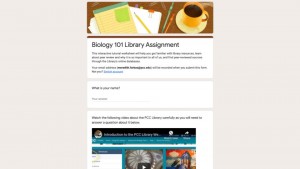
As soon as it became clear that Spring term was going to start online, I scrambled to create this tutorial that replicates, as well as I could, what we do in the classroom. So they do the same activity we did in-class where they look at a scholarly article and a news article and list the differences they notice. And in place of discussions, I had them watch videos and share insights. I then shared this with the Biology 101 faculty on my campus and they assigned it to their students in Week 2. It was great! [You can view the Biology 101 tutorial here and make a copy of it here]. And during Spring term I made A LOT more tutorials.
The biggest upside of using Google Forms is its simplicity and familiarity. Nearly everyone has created a Google form and they are dead simple to build. I knew that my colleagues in the library could easily copy something I made and tailor it to the courses they’re working with or make something from scratch. And I knew faculty could easily copy an existing tutorial and be able to see student responses. For students, it’s a low-bandwidth and easy-to-complete online worksheet. The barriers are minimal. And on the back-end, just like with LibGuides, there’s a feature where you can easily copy content from another Google Form.
The downsides of using Google Forms are not terribly significant. I mean, I’m sad that I can’t create beautiful, modern, sharp-looking forms, but it’s not the end of the world. The formatting features in Google Forms are really minimal. To create a hyperlink, you actually need to display the whole url. Blech. Then in terms of accessibility, there’s also no alt tag feature for images, so I just make sure to describe the picture in the text preceding or following it. I haven’t heard any complaints from faculty about having to fill out the Qualtrics form in order to get access to the tutorials, but it’s still another hurdle, however small.
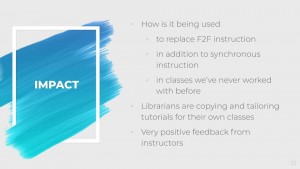
This Spring, we used Google Form tutorials to replace the teaching we normally do in classes like Biology 101, Writing 121, Reading 115, and many others. We’ve also used them in addition to synchronous instruction, sort of like I did with my pre-assignments. But word about the Google Form tutorials spread and we ended up working with classes we never had a connection to before. For example, the Biology 101 faculty told the anatomy and physiology instructors about the tutorial and they wanted me to make a similar one for A&P. And that’s a key class for nursing and biology majors that we never worked with before on my campus. Lots of my colleagues have made copies of my tutorials and tailored them to the classes they’re working with or created their own from scratch. And we’ve gotten a lot of positive feedback from faculty, which REALLY felt good during Spring term when I know I was working myself to the bone.
Since giving this presentation, I learned from my colleagues in Anthropology that they actually used my work as the basis of their annual assessment project (which every academic unit has to do). They used a normed rubric to assess student papers in anthropology 101 and compared the papers of students who were in sections in which I was embedded (where they had access to the tutorial) to students in sections where they did not have an embedded librarian or a tutorial. They found that students in the class sections in which I was involved had a mean score of 43/50 and students in other classes had a mean score of 29/50. That is SIGNIFICANT!!! I am so grateful that my liaison area did this project that so validates my own work.
Here’s an excerpt from one email I received from an anatomy and physiology instructor: “I just wanted to follow up and say that the Library Assignment was a huge success! I’ve never had so many students actually complete this correctly with peer-reviewed sources in correct citation format. This is a great tool.” At the end of a term where I felt beyond worked to the bone, that was just the sort of encouragement I needed.
I made copies of a few other tutorials I’ve created so others can access them:
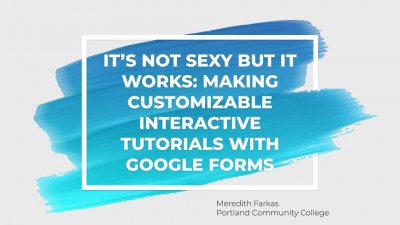
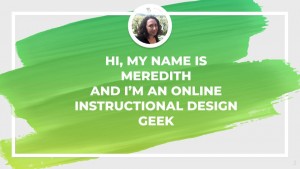
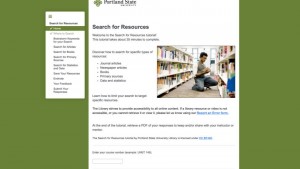
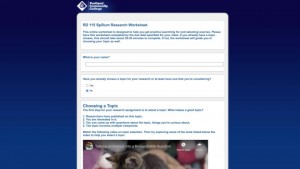
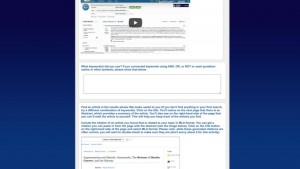
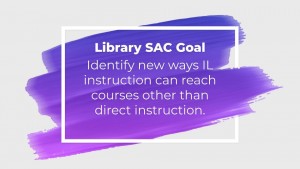
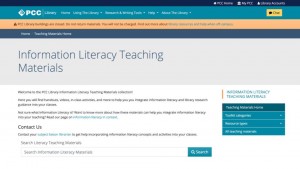

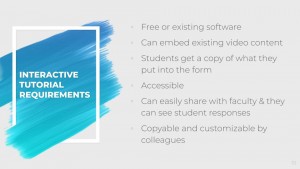
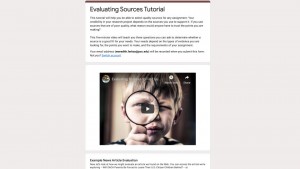
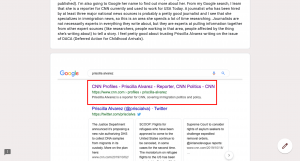
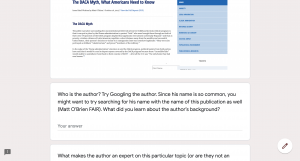
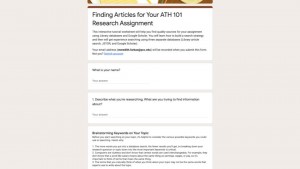

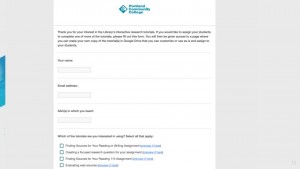
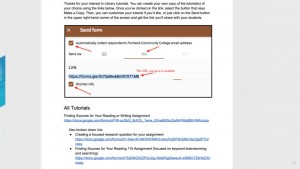
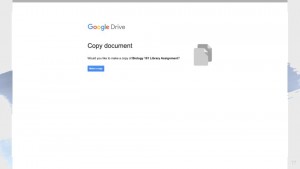
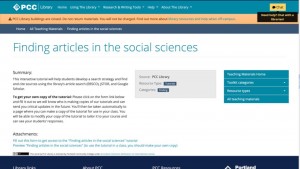
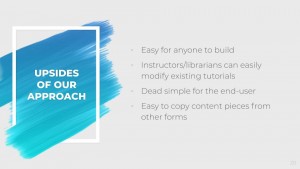
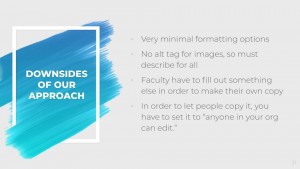

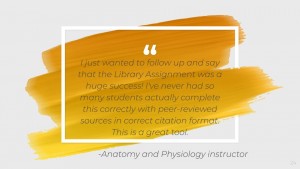
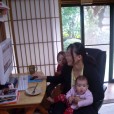





As a retired librarian with a passion for this sort of thing, may I say how great it is? I was at Oxford, in the Bodleian, but now I work with the Danish Institute of Human Rights to deliver distance learning in Myanmar on eresources in law. I have used Google Forms, but look forward to exploring what you have done and learning from you. Thanks so much for sharing!
Best wishes,
Ruth
Thanks for the kind words, Ruth! And best wishes with your work in Myanmar; that sounds really interesting and rewarding.
Thanks for this – loving the evaluating content and have made a copy to play with!